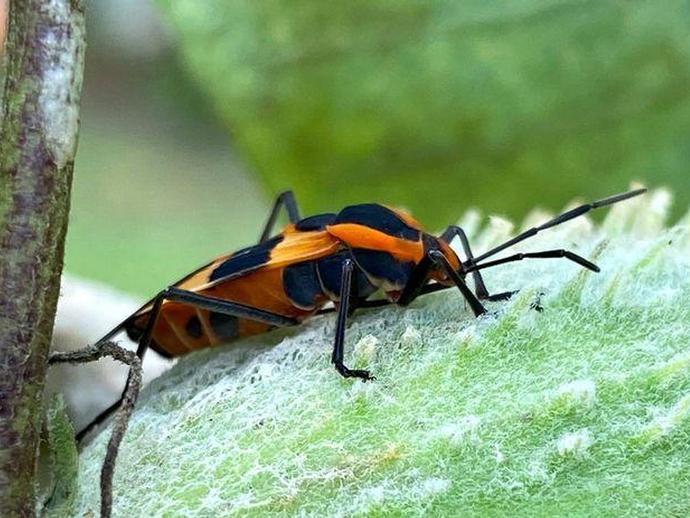August 5, 2021
It's time for today's edition of #BenInNature presented by our friends at Carter Bank & Trust!
Yesterday we took a closer look at milkweed pods, which are filled with toxic organic compounds called cardiac glycosides. Today, let's look at a critter that feeds on milkweed pods without a care: Oncopeltus fasciatus, the large milkweed bug!
Large milkweed bugs have a huge range and can be found throughout most of North America. When feeding on milkweed, these bugs have the unique ability to separate the lipids, proteins, and carbohydrates they need to survive from the toxic compounds; the toxic compounds are sequestered within the milkweed bug and make the bug itself toxic to predators! The striking orange and black coloration of the milkweed bug is an example of aposematism, which is coloration that allows an animal to advertise to predators that it should not be eaten or attacked.
Interestingly, these bugs are often used as a model organism in laboratory experiments due to their short developmental time, ease of reproduction, and simple care. The next time you see a large milkweed bug, be sure to thank it for its contributions to science!
ABOUT #BenInNature
Social distancing can be difficult, but it presents a great opportunity to become reacquainted with nature. In this series of posts, Administrator of Science Ben Williams ventures outdoors to record a snapshot of the unique sights that can be found in the natural world. New updates are posted Monday - Friday, with previous posts highlighted on the weekends. This series of posts is made possible thanks to the support of VMNH Corporate Partner Carter Bank & Trust (www.cbtcares.com).
NATURE PHOTO IDENTIFICATIONS
If you discover something in nature that you would like help identifying, be sure to message us right here on Facebook with a picture (please include location and date of picture) and we'll have our experts help you identify it!

 Hours & Admissions
Hours & Admissions Directions
Directions

